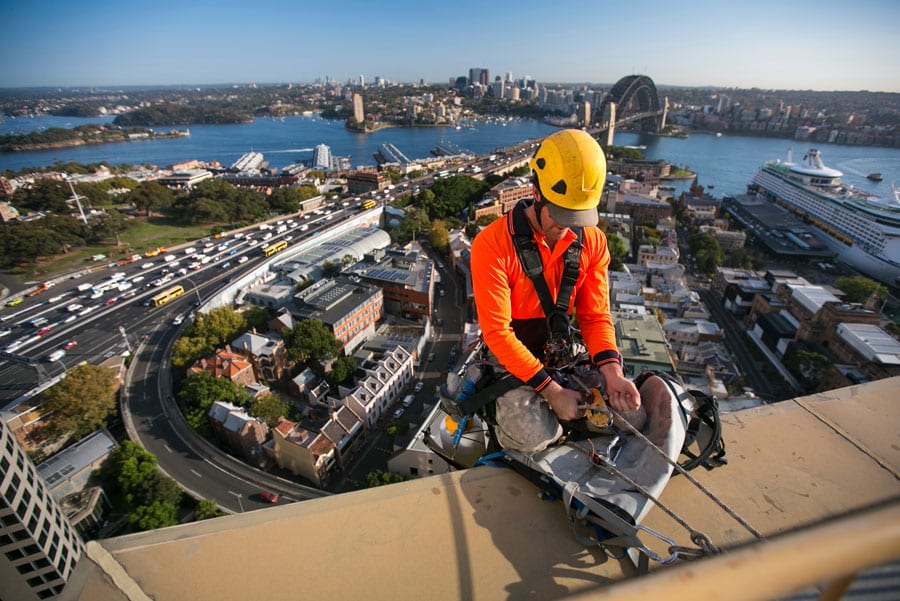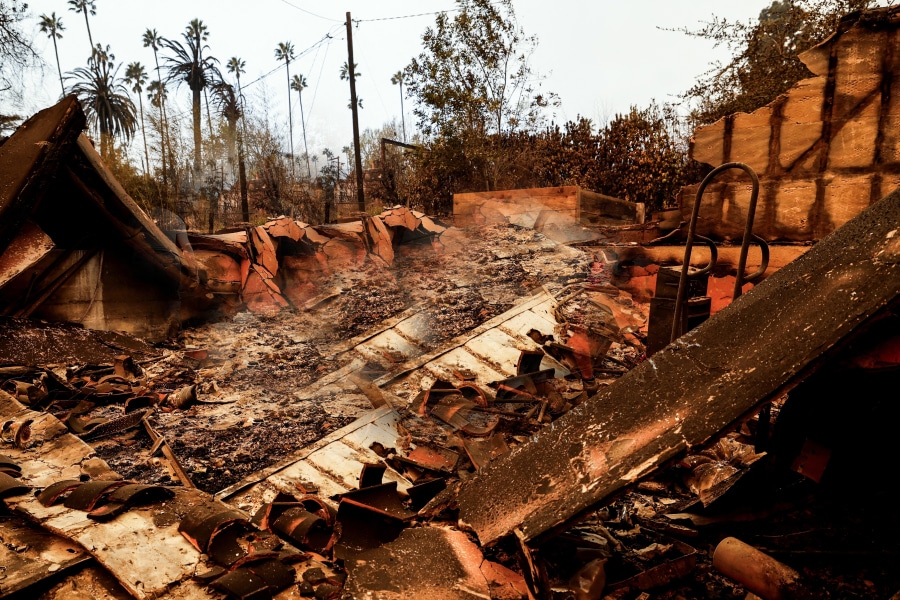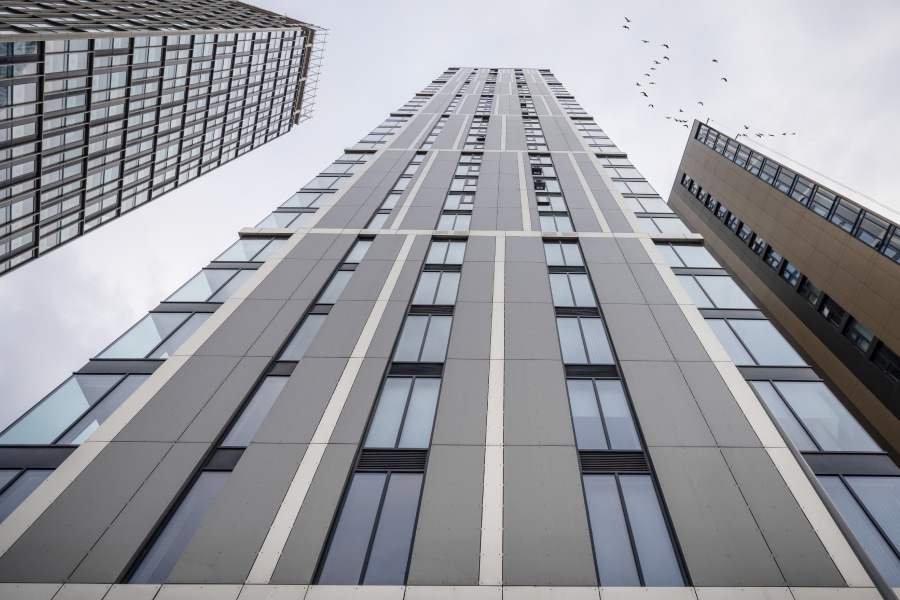Falling from heights is firmly fixed as one of the most common causes of injury and death among Australian workers.
Across the nation, about 30 people die each and every year as a result of falls occurring in the workplace – with half of these falls at three metres or less. Meanwhile, every single day, more than 20 Australian workers make workplace injury claims as a result of a fall.
Working at height – any height - is considered to be a high-risk activity, and a leading cause of death and serious injury in Australia.
Business owners and managers play a central role in ensuring workplaces and team members are as safe as possible across all aspects of their jobs – including working at heights.
According to Safe Work Australia, business owners and managers as a PCBU (Person Conducting a Business or Undertaking) must seek to eliminate or minimise risks to health and safety so far as reasonably practicable. They are responsible for ensuring job sites reduce and manage associated risks when tasks are above ground.
Where possible, work should be carried out on the ground or a solid construction. In cases where work is not able to be undertaken in these locations, work sites at height should use control measures, which may include:
- fall prevention infrastructure such as guardrails, walkways, stairs, ladders, scaffolding, or elevating work platforms;
- a work positioning system such as static lines or anchors,
- a fall arrest system – for example, rigid rail, anchors, fall arrest lanyards, a safety net or catch platform.
Construction work that features a risk of falling more than 2 metres is considered to be high risk – meaning your workers need to complete a Safe Work Method Statement (SWMS) before beginning work.
Building safely at heights is a specialist field, and for new construction as well as at-height maintenance, getting the right advice at the right time is critical.
“A lot of the problem – in particular when it comes to working on existing structures – is the client’s lack of understanding of Height Safety systems’ rules and regulations,” Anchored Height Safety managing director Mark Anderson said.
“We find that three in four businesses that come to us really don’t have a strong idea of what is needed to be compliant, or whether their usage requirements are being met through the safety measures they have in place.
“Often businesses come to us thinking they have a small certification issue – that they just need to have an inspection – however they underestimate what is actually required for an appropriate, safe and compliant safety system.”
Anchored Height Safety designs, installs and certifies permanent anchor points, static lines, walkways, platforms, roof ladders, guardrails, and hatches for high safety purposes.
Trusted to deliver safety solutions for a range of commercial and public infrastructure projects, height safety specialists Anchored Height Safety also offers full design analysis, roof anchor testing and audits of height safety equipment.
As an organisation focused on ensuring safety, the business nominated the challenge of demonstrating “return on investment” as a key impediment to businesses investing in safety measures.
“Balancing risk management and the investment required is often a key area of discussion. While price is obviously a very important factor, it is also critical to understand the intended use of the safety system to ensure compliance and the safety of those who will ultimately use the system.” Mark said.
“The bottom line is that if you want to ensure your business is protected in the event of an accident you have a responsibility to ensure safety compliance. This may change over time with changes to the building, plant and usage, meaning height access and safety equipment may need to be updated.
“Safety mechanisms are like any other infrastructure, they need maintenance, repair and replacement as they age.”
Recognising the evolution of safety, as well as the increasing complexity of buildings under construction as well as in delivering key maintenance works, the Working at Height Association of Australia (WAHA) was established in 2009.
The peak body offers information, guidance and support for businesses needing to address working at height issues. Within its range of functions, WAHA also develops submissions and provide informed and evidence-based review and advice to Australian Government departments, Regulatory Authorities and other organisations on matters concerning work-at-height and confined space health, safety and training.
“The actual risk of working at height is often misunderstood,” WAHA CEO, Scott Barber, said.
“The reality is that most falls – including workplace injuries and those in the general community – occur from heights of less than three metres. A fall may happen from one elevated level to another level, from an elevated level to the ground, or even from the ground into a below-ground level via an opening,” he said.
“People often forget that fall risks also exist at ground-level, not just from above it. Falls through a penetration in a building into a pit or sewer or other form of below-ground cavity also represents a significant risk of personal injury and is included in the broader definition of falls from height.”
Despite significant regulatory support, resources and education, falls from height are still a major contributor to deaths and serious injury in Australian workplaces.
Both Mark and Scott warn that complacency across industry is most prevalent in cases where people are working at low heights.
“It is often difficult to manage risks at low heights,” Mark said.
“This is where passive height safety such as guard rails play an important role. Remember – even if you only fall half a metre onto a protrusion, plant or other uneven surface you can still really hurt yourself.”
“Don’t assume because height safety was ticked on a box when you took over the building that the system will be safe for the use you are intending,” Mark said.
“It’s critical to get independent professional advice and support – people who can look at the building, the safety mechanisms you have in place, and who are qualified to determine whether they are fit for the purpose you are seeking to use them.”
Other actions workplaces can take to build safety include:
- Ensuring new team members are properly trained, supported and supervised;
- Partner workers together – never leave a person working at height alone;
- Always assess a site and its requirements, alongside risk mitigation in relation to accidents and falls through a Safe Work Method Statement (SWMS);
- Use work platforms and guardrails when suitable;
- At increasing levels of height use anchors, restraints and ropes;
- At considerable heights increase safety mechanism to include safety nets, catch platforms and harness-based fall-arrest used with lifelines or individual anchors.











